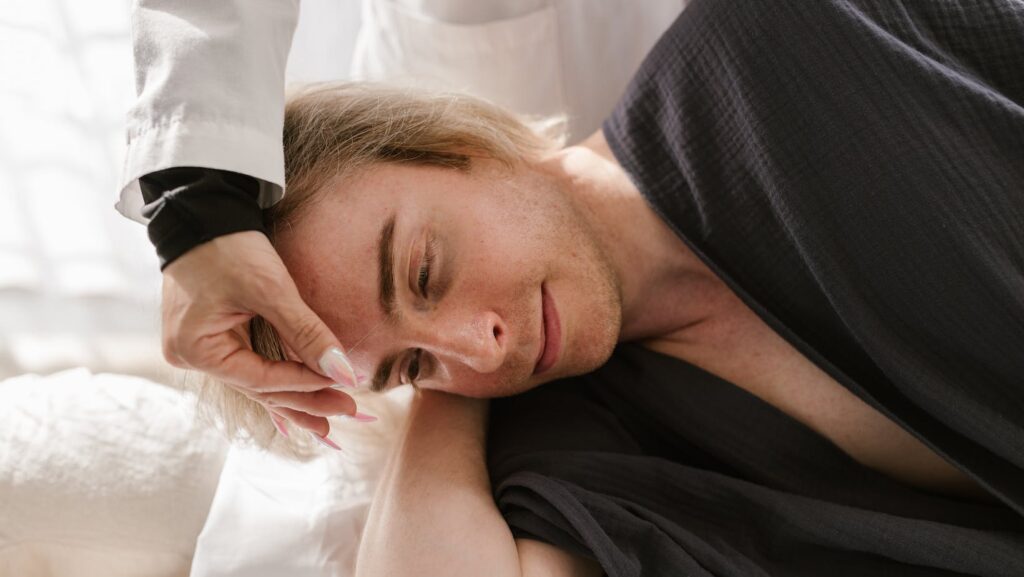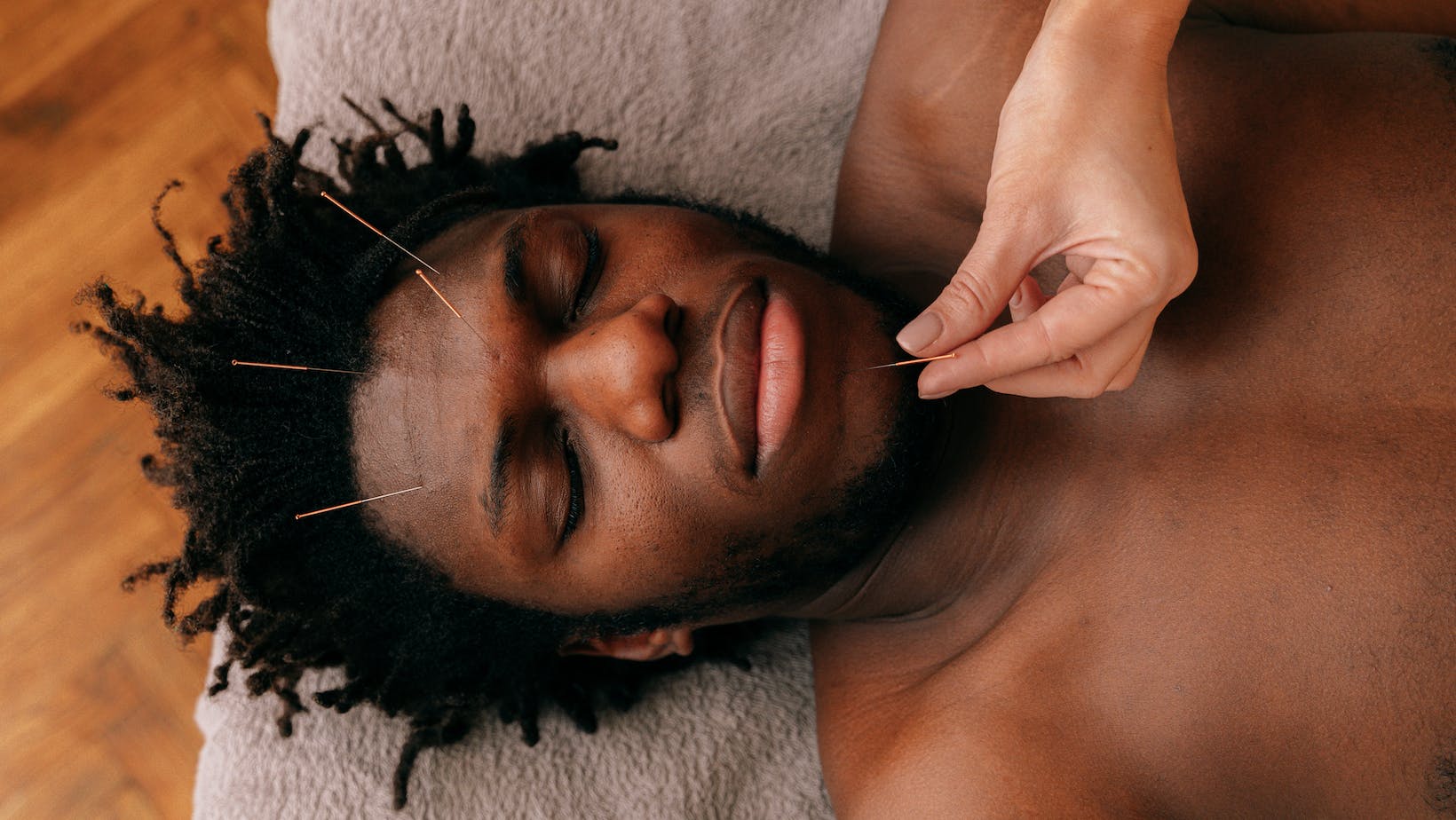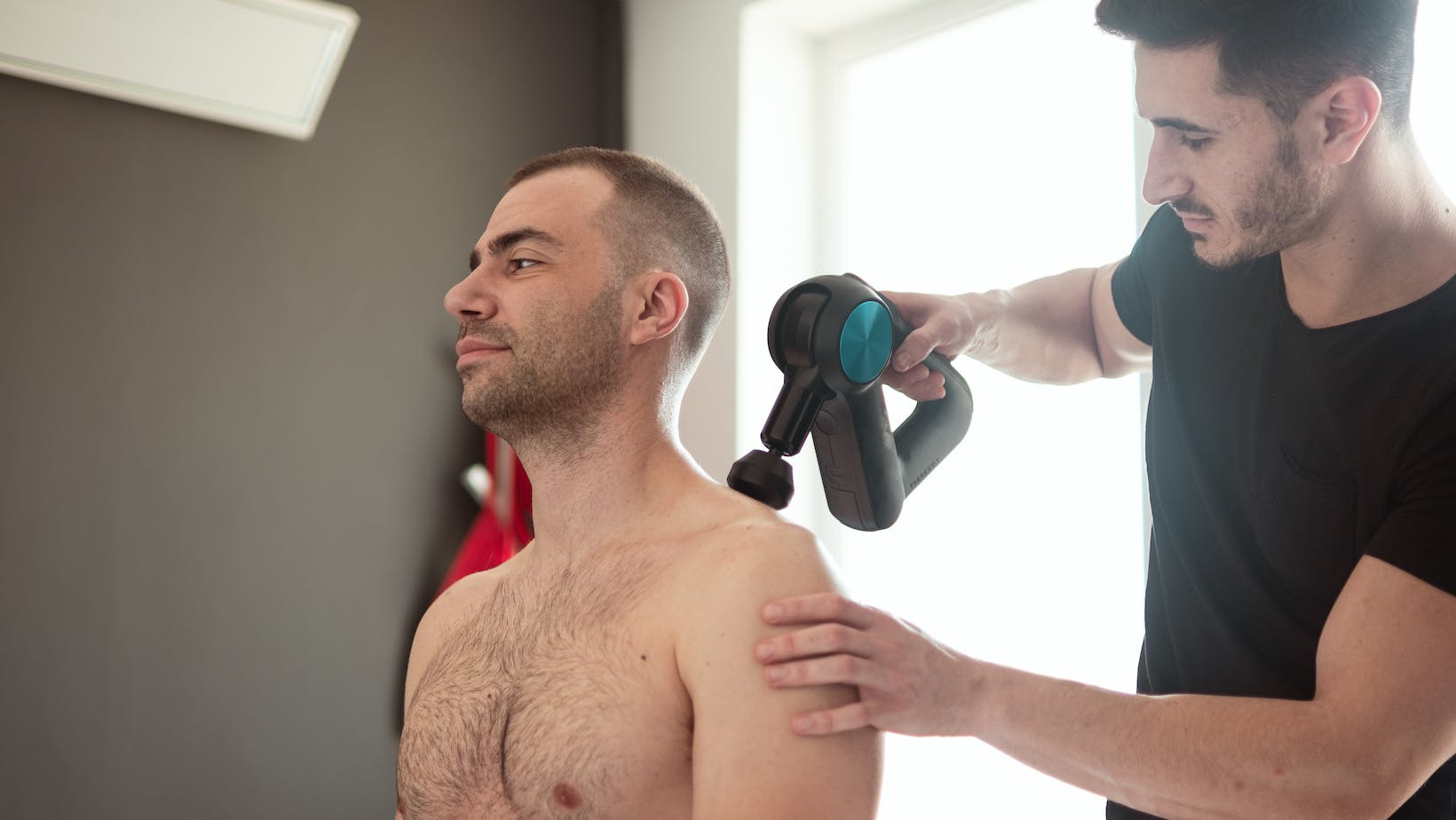
If you suffer from headaches, you know how debilitating they can be. Whether you experience tension headaches, migraines, or another type of headache, finding relief is a top priority. While medication can be effective in managing headache symptoms, it’s not always the best solution. Fortunately, physiotherapy is emerging as a promising approach to managing and reducing headaches.
Physiotherapy is a type of treatment that uses exercises, manual therapy, and other techniques to help improve physical function and reduce pain. When it comes to headaches, physiotherapy can help address underlying issues that may be contributing to your symptoms. Depending on the type of headache you experience, physiotherapy may involve exercises to improve posture and neck mobility, manual therapy to release tension in your muscles, or other techniques to help reduce pain and improve function with physiotherapy for headaches.
If you’re considering physiotherapy for your headaches, it’s important to understand how it works and what to expect. In this article, we’ll explore the efficacy of physiotherapy for headaches, the different physiotherapeutic approaches to managing headaches, and when to seek physiotherapy. We’ll also provide tips for maximizing the benefits of physiotherapy and discuss potential risks and considerations to keep in mind.
Understanding Headaches
If you’re reading this article, it’s likely that you’re experiencing headaches. Headaches are a common condition that almost everyone experiences at some point in their life. They can range from mild to severe, and they can be caused by a variety of factors. In this section, we’ll discuss the different types of headaches and the physiology of headache pain.
Types of Headaches
There are several types of headaches, and each type has its own set of symptoms. Some of the most common types of headaches include tension headaches, migraines, and cluster headaches.
Tension headaches are the most common type of headache. They are often described as a constant pressure or tightness around the head. Tension headaches can last from a few minutes to several days, and they can be caused by stress, poor posture, or muscle tension.
Migraines are a type of headache that is characterized by a severe throbbing pain on one side of the head. Migraines can also cause nausea, vomiting, and sensitivity to light and sound. They can last from a few hours to several days, and they can be triggered by certain foods, stress, or hormonal changes.
Cluster headaches are a rare type of headache that is characterized by severe pain on one side of the head. They are called “cluster” headaches because they tend to occur in clusters, meaning that the headaches will occur several times a day for several weeks or months before disappearing for months or even years.
Physiology of Headache Pain
Headache pain is caused by the activation of pain-sensitive nerves in the head. These nerves are located in the blood vessels, muscles, and nerves in the head and neck. When these nerves are activated, they send pain signals to the brain, which is interpreted as a headache.

Physiotherapy can help with headaches that are caused by issues in the neck, such as cervicogenic headaches. These headaches are caused by problems in the neck, such as muscle tension or joint dysfunction. Physiotherapy can help by reducing muscle tension, improving joint mobility, and improving posture. By addressing the underlying issues in the neck, physiotherapy can help to reduce the frequency and severity of headaches.
Overview of Physiotherapy
If you’re experiencing headaches, physiotherapy may be a helpful treatment option. Physiotherapy is a practice that uses physical methods, such as exercise, massage, and manipulation, to promote healing and improve function. In the case of headaches, physiotherapy can help to relieve pain and tension in the neck and head.
Principles of Physiotherapy
Physiotherapy is based on the principles of anatomy, physiology, and biomechanics. Physiotherapists are trained to understand how the body works and how it can be affected by injury, illness, or disease. They use this knowledge to develop treatment plans that are tailored to the individual needs of each patient.
Physiotherapy treatment plans may include exercises to improve strength and flexibility, massage to relieve tension, and manipulation to restore normal joint function. In addition, physiotherapists may provide education and advice on how to prevent further injury and manage symptoms.
Common Physiotherapy Techniques
There are many different physiotherapy techniques that can be used to treat headaches. Some of the most common techniques include:
- Massage: Massage can help to relieve tension in the muscles of the neck and head, which can contribute to headaches.
- Exercise: Physiotherapists may prescribe exercises to improve strength and flexibility in the neck and shoulders, which can reduce tension and pain.
- Postural correction: Poor posture can contribute to headaches. Physiotherapists can provide advice on how to improve posture and prevent headaches.
- Manipulation: Manipulation involves the manual manipulation of joints and soft tissues to restore normal function. This can be helpful in cases where headaches are caused by joint dysfunction or muscle tension.
Overall, physiotherapy can be a helpful treatment option for headaches. By addressing the underlying causes of headaches, physiotherapists can help to relieve pain and improve function, allowing you to get back to your daily activities with less discomfort.
Efficacy of Physiotherapy for Headaches
If you are suffering from headaches, you may be wondering if physiotherapy can help alleviate your pain. While there is no one-size-fits-all answer to this question, there is evidence to suggest that physiotherapy can be an effective treatment option for some types of headaches.
Clinical Studies and Evidence
Several clinical studies have investigated the efficacy of physiotherapy for headaches. For example, a study published in the Journal of Headache and Pain found that a combination of passive physiotherapy techniques with exercise and/or transcutaneous electrical stimulation was the most effective physiotherapy intervention to reduce pain intensity and frequency in the short term. However, more research is needed to investigate mid-term and long-term effects.
Another study published in the Journal of Manual and Manipulative Therapy found that manual therapy, postural correction, and targeted exercises can help reduce headache frequency and intensity. The study concluded that physiotherapy can be an effective treatment option for patients with cervicogenic headaches.
Physiotherapy vs. Medication
While medication is often the first line of treatment for headaches, physiotherapy can be a viable alternative or complementary treatment option. Physiotherapy can help address the underlying causes of headaches, such as muscle tension and poor posture, rather than just masking the pain with medication.
In addition, physiotherapy has fewer side effects than medication and can be a safer option for some patients. However, it is important to consult with your healthcare provider before starting any new treatment regimen, including physiotherapy.
Overall, while physiotherapy may not be effective for all types of headaches, it can be a promising treatment option for some patients. If you are interested in exploring physiotherapy as a treatment option for your headaches, be sure to talk to your healthcare provider to determine if it is right for you.
Physiotherapeutic Approaches to Headaches
If you’re experiencing headaches, physiotherapy may be a beneficial treatment option for you. Physiotherapeutic approaches to headaches include manual therapy, exercise therapy, posture correction, and stress management techniques.
Manual Therapy
Manual therapy is a hands-on approach to physiotherapy that involves the manipulation of soft tissue and joints. This technique can help reduce muscle tension and improve blood flow, which may alleviate headache symptoms. Specific manual therapy techniques that may be used include soft tissue mobilization and joint mobilization.
Exercise Therapy
Exercise therapy involves specific exercises designed to improve muscle strength, flexibility, and endurance. This approach can help address muscle imbalances and postural issues that may contribute to headaches. Additionally, exercise can help reduce stress and tension, which may also alleviate headache symptoms.
Posture Correction
Poor posture can place unnecessary stress on the neck and shoulders, which can contribute to headaches. Physiotherapists can work with you to identify postural issues and develop a plan to correct them. This may include exercises to strengthen weak muscles, stretches to improve flexibility, and ergonomic recommendations to improve workplace posture.
Stress Management Techniques
Stress and tension can be significant contributors to headaches. Physiotherapists can teach you various stress management techniques, such as deep breathing exercises, meditation, and progressive muscle relaxation. These techniques can help you manage stress and reduce tension, which may alleviate headache symptoms.
In conclusion, physiotherapy can be an effective treatment option for headaches. By using manual therapy, exercise therapy, posture correction, and stress management techniques, physiotherapists can help alleviate headache symptoms and improve overall quality of life.
When to Seek Physiotherapy
If you experience frequent headaches, you may be wondering if physiotherapy can help alleviate your symptoms. While physiotherapy may not be appropriate for all types of headaches, it can be an effective treatment for many individuals.
Indications for Physiotherapy
Physiotherapy can be helpful for headaches that are caused by musculoskeletal issues, such as tension headaches or headaches caused by poor posture. If you have tried other treatments, such as medication or relaxation techniques, and have not experienced relief, physiotherapy may be an appropriate next step.
Referral and Assessment
To determine if physiotherapy is the right treatment for your headaches, you should schedule an appointment with a physiotherapist. Your physiotherapist will conduct a thorough assessment, which may include a physical exam, medical history review, and discussion of your symptoms.
Based on the assessment, your physiotherapist will develop a treatment plan that is tailored to your specific needs. This may include exercises to improve posture, massage, and manual cervical traction. Your physiotherapist may also provide advice on how to prevent headaches by modifying everyday habits.
It is important to note that physiotherapy is not a quick fix for headaches, and it may take several sessions to see improvement. However, with a dedicated effort, physiotherapy can be an effective treatment option for individuals who suffer from headaches caused by musculoskeletal issues.
Maximizing the Benefits of Physiotherapy
Physiotherapy can be an effective treatment for headaches, but to maximize the benefits, it is important to adhere to your treatment plan and make lifestyle changes.
Adherence to Treatment Plans
To get the most out of your physiotherapy sessions, it is important to attend all scheduled appointments and follow the treatment plan provided by your physiotherapist. This may include exercises to improve posture and muscle strength, as well as soft tissue mobilization and hot and cold therapy.

It is also important to communicate with your physiotherapist about any concerns or questions you may have about your treatment plan. They can provide guidance and make adjustments as needed to ensure the best possible outcomes.
Lifestyle Changes and Self-Care
In addition to attending physiotherapy sessions, there are lifestyle changes and self-care practices that can help manage headaches. These may include:
- Practicing good posture throughout the day
- Taking regular breaks to stretch and move
- Maintaining a healthy diet and staying hydrated
- Getting regular exercise and physical activity
- Managing stress through relaxation techniques or mindfulness practices
Your physiotherapist can provide guidance on incorporating these practices into your daily routine to help manage headaches and improve overall well-being.
By adhering to your treatment plan and making lifestyle changes, you can maximize the benefits of physiotherapy for headache management. Remember to communicate with your physiotherapist and make adjustments as needed to ensure the best possible outcomes.
Potential Risks and Considerations
Contraindications and Precautions
While physiotherapy can be an effective treatment for headaches, it is important to note that there are some contraindications and precautions that should be taken into consideration. For example, if you have a history of spinal cord injury or nerve damage, you should consult with your healthcare provider before beginning any physiotherapy treatment. Additionally, if you have any underlying medical conditions, such as osteoporosis or arthritis, it is important to discuss your condition with your physiotherapist before beginning treatment.
It is also important to note that some physiotherapy techniques, such as manipulation and massage, may not be suitable for everyone. For example, if you have a history of blood clots or are taking blood-thinning medication, your physiotherapist may need to modify your treatment plan to avoid the risk of injury.
Managing Expectations
While physiotherapy can be an effective treatment for headaches, it is important to manage your expectations and understand that it may not provide immediate relief. It may take several sessions of physiotherapy before you begin to see improvement in your symptoms.
It is also important to understand that physiotherapy is not a cure for headaches. While it can help to manage and reduce symptoms, it is important to continue to work with your healthcare provider to identify and address any underlying causes of your headaches.
Overall, physiotherapy can be a safe and effective treatment option for headaches when performed by a qualified healthcare provider. By understanding the potential risks and considerations, and managing your expectations, you can work with your physiotherapist to develop a treatment plan that is right for you.
Frequently Asked Questions
What Techniques Do Physiotherapists Use to Treat Headache Symptoms?
Physiotherapists use a variety of techniques to treat headache symptoms. These techniques include but are not limited to manipulation, massage, postural correction, and rehabilitation exercises. Physiotherapists may also provide useful advice on how to prevent headaches by modifying everyday habits.
How Can Physiotherapy Address Cervicogenic Headaches Specifically?
Cervicogenic headaches are caused by problems in the neck, such as muscle tightness or joint dysfunction. Physiotherapy can address these underlying issues through techniques such as manual therapy, exercise, and education. Physiotherapists can also help improve posture and ergonomics to reduce the risk of cervicogenic headaches.
What Are the Most Effective Exercises Recommended by Physiotherapy for Migraine Relief?
The most effective exercises for migraine relief recommended by physiotherapy depend on the individual and their specific symptoms. However, exercises that focus on improving neck mobility and strength, such as cervical spine mobilization and deep neck flexor strengthening, have been shown to be effective in reducing migraine frequency and intensity.
How Does Physiotherapy Compare to Chiropractic Care in Managing Headache Pain?
Physiotherapy and chiropractic care both aim to address underlying musculoskeletal issues that may be contributing to headache pain. However, physiotherapy typically takes a more holistic approach, incorporating a wider range of techniques and exercises to address the root cause of the pain. Chiropractic care may focus more on spinal adjustments and manipulations.
What Should I Expect During My First Physiotherapy Session for Headache Treatment?
During your first physiotherapy session for headache treatment, the physiotherapist will likely conduct a thorough assessment to determine the underlying cause of your headaches. This may include a physical examination, questions about your medical history and lifestyle, and possibly imaging tests. Based on this assessment, the physiotherapist will develop a personalized treatment plan for you.
Are There Any Particular Physiotherapy Modalities Known to Alleviate Tension-Type Headaches?
There are several physiotherapy modalities that may help alleviate tension-type headaches, including but not limited to massage, trigger point release, and stretching exercises. However, the most effective treatment approach will depend on the individual and their specific symptoms. It is important to work with a qualified physiotherapist to determine the best course of treatment for you.












